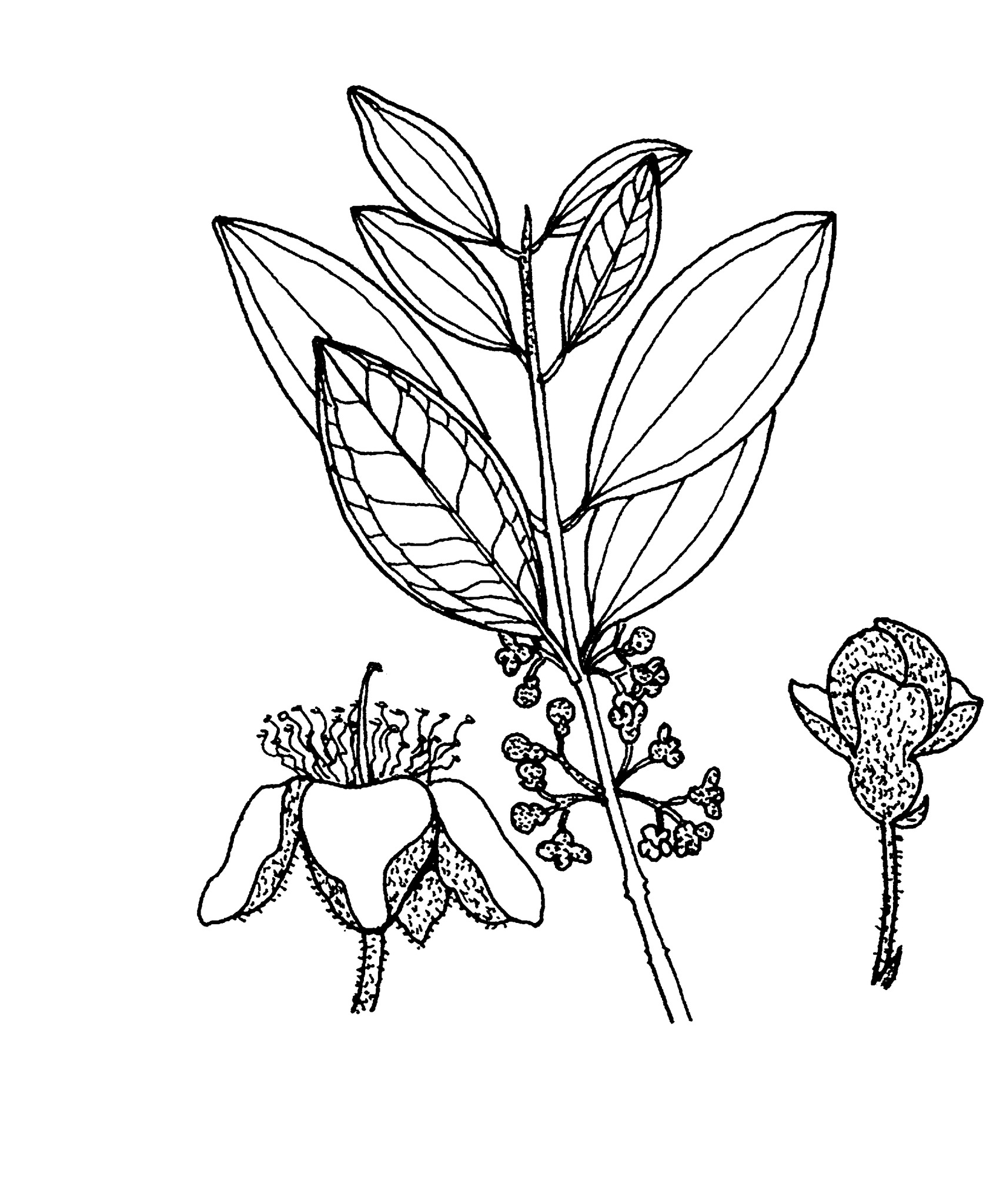
Greek rhodon — rose, amnion — bowl used for the blood of sacrificial lambs, hence ‘rose bowl’ in reference to the near globular calyx tube.
Shrubs or trees. Leaves opposite with 3 nerves from the base and numerous transverse veins, stalked. Flowers axillary. Sepals 4-5, free, persistent in fruit. Petals 4, free. Stamens numerous in 3-4 rows, filaments free; anthers versatile. Ovary 1-chambered. Fruit a fleshy berry with few seeds.
Grown for the interesting 3-veined leaves.
About 28 species from China to New Caledonia and Australia (13 species).
Seed or cuttings.
Mostly trees; leaves opposite; ovary 1-chambered; fruit a fleshy berry.
Scott (1979).
Source: (2002). Myrtaceae. In: . Horticultural Flora of South-eastern Australia. Volume 3. Flowering plants. Dicotyledons. Part 2. The identification of garden and cultivated plants. University of New South Wales Press.
